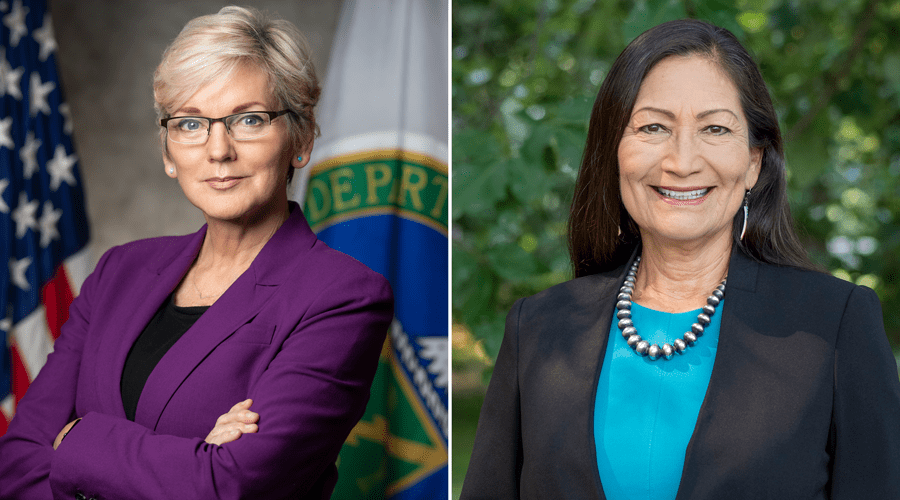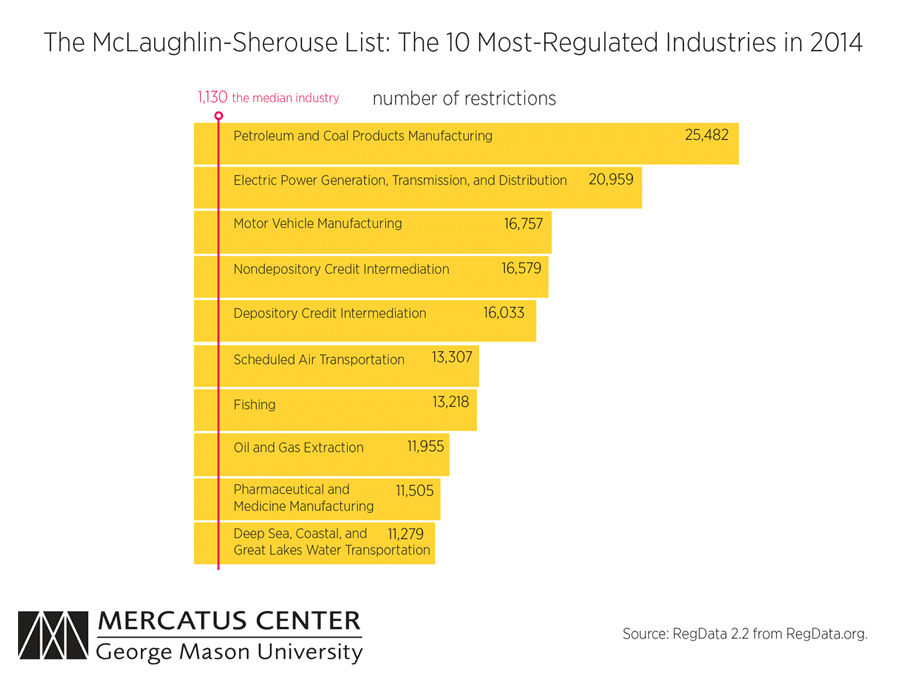Critics say the petroleum industry, including oil and gas, needs to be more heavily regulated when, in fact, it is one of the most highly regulated industries there is.
The U.S. government has a Code of Federal Regulations (CFR). These CFRs are the process of arranging laws or rules into a system or plan, or “codification” of permanent regulations, or rules, promulgated by the U.S. executive departments and agencies of the federal government. The CFRs are organized by titles, each title covering different subject areas. Amendments to the rules or regulations are published in the daily Federal Register.
The government agencies which oversee and develop the oil and gas regulations were given this authority, throughout the years, by various acts and laws established by the U.S. Congress and the administration.
Regulatory Agencies
The regulations for the oil and gas industry fall mainly under the Department of Energy (DOE), led by Secretary Jennifer M. Granholm, the Department of Interior (DOI), headed by Secretary Deb Haaland, the first Native American to serve in a cabinet post, the Department of Transportation (DOT), led by Secretary Pete Buttigieg and Deputy Secretary Polly Trottenberg, and the Environmental Protection Agency (EPA), where Michael S. Regan is the first Black man and second person of color to lead the agency.

While each of these departments covers many areas, the agencies within these departments that oversee oil and gas regulations are:
- The Federal Energy Regulatory Commission (FERC), under the Department of Energy (DOE)
- The Bureau of Safety and Environmental Enforcement (BSEE), under the Department of Interior (DOI)
- The Bureau of Ocean Energy Management (BOEM), under the Department of Interior (DOI)
- The Bureau of Land Management (BLM), federal lands, under the Department of Interior (DOI)
- Pipeline and Hazardous Materials Safety Administration (PHMSA), under the Department of Transportation (DOT)
- The Environment Protection Agency (EPA), which is organized into different offices that are responsible for different CFRs governing the oil and gas industry.
The Federal Energy Regulatory Commission
The Federal Energy Regulatory Commission, or FERC, is an independent agency that regulates the interstate transmission of electricity, natural gas, and oil. FERC also reviews proposals to build liquefied natural gas (LNG) terminals and interstate natural gas pipelines as well as licensing hydropower projects. FERC has no jurisdiction over construction or maintenance of production wells, oil pipelines, refineries or storage facilities. These, as well as other items, are under the jurisdiction of the agencies discussed below.
FERC is governed by five commissioners, including one woman, Allison Clements, who is a lawyer and previously worked in energy law and grid modernization policy.
The rules under FERC fall under the CFR Title 18, Conservation of Power and Water Resources, Chapter 1 Federal Energy Regulatory Commission, Department of Energy.
The Bureau of Safety and Environmental Enforcement
The Bureau of Safety and Environmental Enforcement (BSEE) is responsible for developing, implementing and enforcing regulations concerning oil, gas and sulfur exploration, and development and production operations on the Outer Continental Shelf. BSEE also reviews and approves oil spill response plans submitted by owners and operators of offshore facilities and undertakes periodic inspections of oil spill response equipment.
There are two women in leadership in the divisions that fall under BSEE oversight: Chief of the Office of Regulatory Programs (OORP), Stacey Noem, was a graduate of the U.S. Naval Academy in 1987, during the first decade women were allowed to apply to the Academy, and Janine Tobias, chief of the Safety Enforcement Division (SED), which develops and maintains the agency’s national compliance and enforcement policy, in addition to organizing enforcement strategy for the agency.
These rules are published under the CFR, Title 30, Mineral Resources, Parts 250-285, Bureau of Safety and Environmental Enforcement, Offshore.
The Bureau of Ocean Energy Management
Another agency under the DOI, the Bureau of Ocean Energy Management (BOEM), headed by former New York First Assistant Secretary for Energy and the Environment Amanda Lefton, is primarily responsible for leasing marine minerals, such as oil and gas, from the Outer Continental Shelf (OCS), as well as ensuring environmental stewardship for coastal as well as the OCS.
Both BSEE and BOEM were formed in 2011 after a reorganization of the Mineral Management Service (MMS), the former DOI regulator.
 The Bureau of Land Management
The Bureau of Land Management
The Bureau of Land Management (BLM) also falls under the Department of Interior (DOI). Led by Director Tracy Stone-Manning, it is responsible for oversight of oil and gas on federal land. The BLM manages the federal government’s onshore subsurface mineral estate – about 700 million acres (30 percent of the United States) held by the BLM, U.S. Forest Service, and other federal agencies and surface owners – for the benefit of the American public. It also manages some aspects of the oil and gas development for Indian tribes from the Tribal mineral estate.
The BLM oversees many aspects of land oil and gas including exploration, permitting, development and production of onshore oil and gas on federal leases. The BLM also regulates production measurement technology, equipment and processes, and methane and waste prevention rules. These rules are published under CFR, Title 43, Public Lands: Interior, Part 3160, Onshore Oil and Gas Operations, Part 3174 – Measurement of Oil and Part 3175 – Measurement of Gas.
The Pipeline and Hazardous Materials Safety Administration
The Pipeline and Hazardous Materials Safety Administration (PHMSA) agency which falls under the Department of Transportation (DOT) is responsible for the safe transportation of energy and other hazardous materials and does that by establishing national policy, setting and enforcing standards, educating and conducting research to prevent incidents. The U.S. energy pipeline infrastructure falls under PHMSA. The pipeline safety regulations fall under the CFR, Title 49, Transportation, Parts 190-199 – Pipeline and Hazardous Material Safety Administration.
The Environmental Protection Agency
The Environmental Protection Agency (EPA) regulates the oil and gas industry in four main areas: air, waste, water and enforcement. Two of those divisions are headed by women: The Office of Chemical Safety and Pollution Prevention is led by Assistant Administrator, Michal Ilana Freedhoff, and the Office of Water is led by Assistant Administrator, Radhika Fox. The EPA regulations fall under CFR, Title 40, Protection of the Environment, and different chapters and parts cover rules for oil and gas emissions in all sectors, industrial waste, wastewater and improving air quality through enforcement.
State and Local Regulators
There are state and local oil and gas regulators and regulations, such as the Texas Railroad Commission (TRRC), and state agencies for offshore state waters, but the reader is directed to the different state agencies for information.
Each of the agencies mentioned above is structured differently, but the rules and regulations are written by each agency’s experts and the regulations are amended as required. Each time a new rule is written or amended, an announcement is published in the Federal Registry and there is a comment period in which the public is allowed to comment. This is a time when the oil and gas industry technical experts comment, as well as members of the general public. The agency considers all comments and often changes the regulations based on the public comments.
Oil and Gas Organizations
Oil and gas organizations, such as the American Petroleum Institute (API), the GPA Midstream, and other industry standard development organizations, such as ASTM International, develop and publish standards that are used in the oil and gas industry. These standards cover equipment, processes and measurement of oil and gas for the industry. These standards are often incorporated by reference in the government regulations and companies required to comply with the regulations, must therefore follow these standards.
The API, GPA Midstream and ASTM International develop standards by a consensus process of technical experts and representatives of the regulatory agencies participate in the development of these standards by sitting on the various standard development committees. This is a time when industry works with government to develop the best standards for the oil and gas industry, which can be incorporated by reference into regulation. Importantly, as a result of the public comment period on new and amended regulations, the oil and gas industry has an opportunity to contribute to the shaping of government regulations.
Sally Goodson retired from The American Petroleum Institute (API) in May of 2022. She spent over 40 years in the natural gas and oil industry, working for Chevron Corp. as an engineer responsible for the design, construction and installation of offshore oil and gas platforms, and API, providing technical expertise for upstream and midstream segments. Goodson supports and volunteers for the Salvation Army and participates in STEM events.
Oil and gas operations are commonly found in remote locations far from company headquarters. Now, it's possible to monitor pump operations, collate and analyze seismic data, and track employees around the world from almost anywhere. Whether employees are in the office or in the field, the internet and related applications enable a greater multidirectional flow of information – and control – than ever before.



